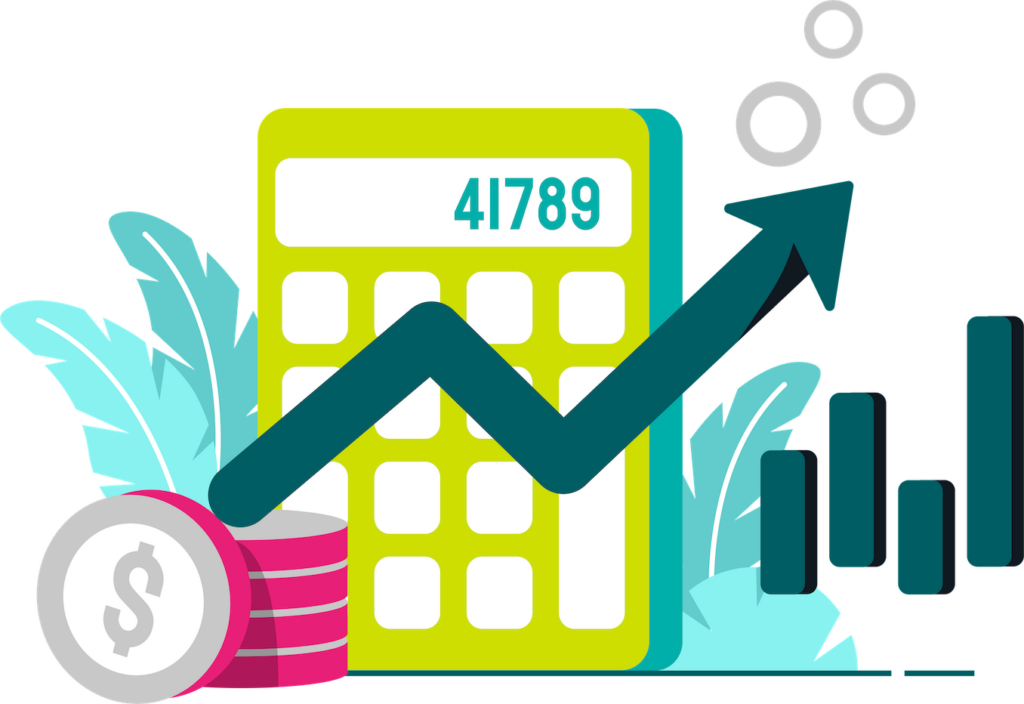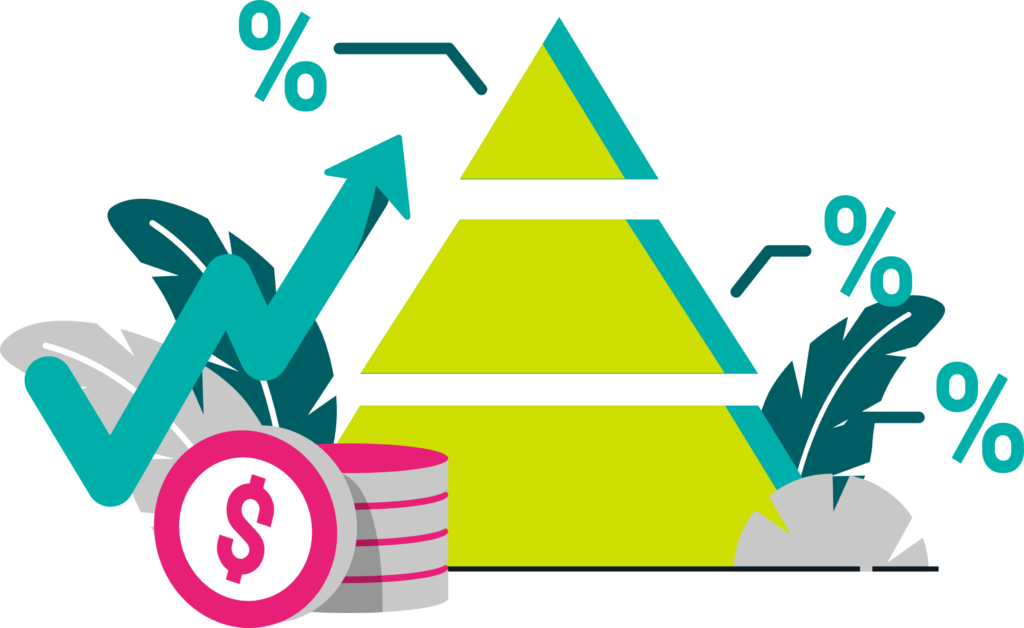Finance metrics and KPIs – best practices
What is a finance KPI?
Financial KPI (Key Performance Indicator) is a measurable value, and it indicates how well a company is doing when it comes to generating revenue and profits. Monitoring KPIs shows whether a business is achieving its long-term goals. Regardless of the size, age, and industry, each and every company needs to be conscious of their financial performance. While accountants deal with all the expenses, income and budgets, the company’s leadership also needs to be informed about important financial measures.
Profitability KPI
Gross Profit
Gross Profit is the money the business makes after deducting the expenditure directly related to the business’ sales activities. Gross profit shows how effective the business is at producing income from the costs of producing the products or services that generate this income.
On its own, gross profit shows the earning potential of the business. It answers the question ‘How much can the business make from its selling operations if all other costs are excluded?’
Operating Profit
Sometimes referred to as EBIT (Earnings Before Interest & Tax), the profitability metric is similar to gross profit. Where gross profit includes just variable costs, operating profit also includes the ‘fixed costs’ of the business.
Fixed costs are expenses that do not fluctuate as sales increase or decrease. Utility bills like heating and electricity, staff salaries, insurance payments and all the conventional costs of ‘being a business’ are fixed costs.
Net Profit / Profit
When people talk about ‘profit’ they usually mean ‘Net Profit’ – what the business is left with after all of its variable costs, fixed costs and interest, investment and tax expenses have been paid.
Efficiency KPIs
Inventory Turnover
Total Asset Turnover
Total asset turnover is an efficiency ratio that measures how efficiently a company uses its assets to generate revenue. The higher the turnover ratio, the better the performance of the company.

Liquidity
This KPI tracks how much money is available in your business. Liquidity is the difference between your current assets and your liabilities. Assets include the cash you have in the bank, the invoices you have already sent out, and your stock. Liabilities include accounts payable. Liquidity is also known as “working capital,” and to have a healthy business, you’re aiming for a ratio between 1.2 and 2.Current ratio
Quick ratio
The quick ratio, also known as the acid-test ratio, measures a company’s ability to pay off its current debt. Current debt includes any liabilities coming due within a year, like accounts payable and credit card charges. The quick ratio provides an indication of a company’s financial health in the short term.Leverage KPIs
Debt to Equity (D/E)
Return On Equity (ROE)


Validation KPIs
Earnings per Share
The quick ratio, also known as the acid-test ratio, measures a company’s ability to pay off its current debt. Current debt includes any liabilities coming due within a year, like accounts payable and credit card charges. The quick ratio provides an indication of a company’s financial health in the short term.
Price to Earnings (P/E)
Revenue churn is a must-know key performance indicator for the SaaS business model. Revenue churn is the percentage of subscription dollars up for renewal that a company loses over a given period, or the ability to keep the contract value of existing customers.
Return on Sales (ROS)/Operating Margin
Return on sales is a vital metric in any business operation to ensure it’s running efficiently and working toward your bottom line. Having adequate return on sales (ROS) ensures that your company has sufficient cash flow, taking into consideration things like business costs and all channels of income. Return on Sales—also known as ROS, Operating Margin, or Operating Profit Margin—is a standardised financial ratio that describes profitability as a percentage of sales revenue. This ratio helps businesses assess how efficiently a company can convert revenue to operating profit. It considers the basic efficiency of your business by converting investment into profit while factoring in things like amortisation.Annual Recurring Revenue (ARR)
Operating Cash Flow Ratio (OCF)
The operating cash flow ratio is a measure of how readily current liabilities are covered by the cash flows generated from a company’s operations. This ratio can help gauge a company’s liquidity in the short term.
Using cash flow as opposed to net income is considered a cleaner or more accurate measure, since earnings are more easily manipulated.
Working Capital
A general Customer Effort Score definition describes it as being a type of customer survey that measures how easy it was for a client to interact with your business (solving an issue with customer support, making a purchase, signing up for a trial, etc.).
Invoice processing costs
To calculate the cost of invoice processing for your business, you need to know the elements that impact expenses.
Days payable outstanding (DPO)
Days payable outstanding (DPO) is a financial ratio that indicates the average time (in days) that a company takes to pay its bills and invoices to its trade creditors, which may include suppliers, vendors, or financiers. The ratio is typically calculated on a quarterly or annual basis, and it indicates how well the company’s cash outflows are being managed.
Days Sales Outstanding (DSO)
Days Sales Outstanding (DSO) is a metric used to gauge how effective a company is at collecting cash from customers that paid on credit.
DSO measures the number of days it takes on average for a company to retrieve cash payments from customers that paid using credit – and the metric is typically expressed on an annual basis for comparability.
Days inventory outstanding
Days inventory outstanding (DIO) is the average number of days that a company holds its inventory before selling it. The days inventory outstanding calculation shows how quickly a company can turn inventory into cash. It is a liquidity metric and also an indicator of a company’s operational and financial efficiency. Days inventory outstanding is also known as “inventory days of supply,” “days in inventory,” or “the inventory period.”
Line Items in Budget
A line-item budget is one in which the individual financial statement items are grouped by category. It shows the comparison between the financial data for the past accounting or budgeting periods and estimated figures for the current or a future period.
Number of Budget Iterations
Estimating the accuracy and efficiency of budgeting processes can be challenging. But one critical measure for this is how many times a company reworks their budgets during creation cycles–the higher number means more iterations before arriving at an accurate plan that will serve them well financially, too! A manual process may include more errors than automated ones because it requires human input which might lead to additional negotiations or confusion on behalf of those who work within companies.
Return on Assets (ROA)
Return on assets is a profitability ratio that provides how much profit a company can generate from its assets. In other words, return on assets (ROA) measures how efficient a company’s management is in earning a profit from their economic resources or assets on their balance sheet.
ROA is shown as a percentage, and the higher the number, the more efficient a company’s management is at managing its balance sheet to generate profits.
Selling, General and Administrative Ratio (SGA)
The category of selling, general, and administrative expenses (SG&A) in a company’s income statement includes all general and administrative expenses (G&A) as well as the direct and indirect selling expenses of the business. This line item includes nearly all business costs not directly attributable to making a product or performing a service. SG&A includes the costs of managing the company and the expenses of delivering its products or services.
